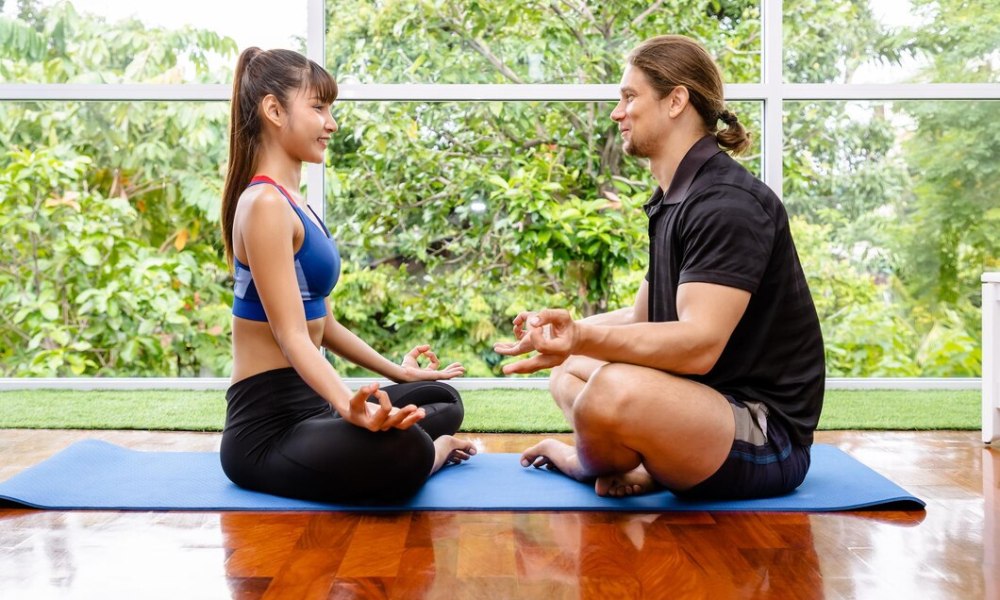
10 Essential Myths and Facts About Yoga Teacher Training in Rishikesh
Despite yoga's growing popularity, several myths surround yoga teacher training. Let's examine the key facts and misconceptions to help you make an informed decision about your yoga journey.

Couple meditates on living room floor
Common Myths vs. Facts About Yoga Teacher Training:
- Flexibility Requirements
- Myth: You need to be extremely flexible
- Fact: Yoga teacher training welcomes all flexibility levels; the focus is on proper technique and understanding
- Age and Experience
- Myth: Only young, experienced practitioners can become teachers
- Fact: Students of all ages and experience levels can successfully complete training
- Teaching Intent
- Myth: You must want to become a teacher to take the training
- Fact: Many students participate for personal growth and deeper understanding
- Physical Intensity
- Myth: Training is entirely focused on physical postures
- Fact: Programs cover philosophy, anatomy, meditation, breathing techniques, and teaching methodology
- Time Commitment
- Myth: Training requires quitting your job
- Fact: Various formats are available, including part-time and weekend programs
Key Considerations When Choosing a Program:
- Verify the school's credentials and certification
- Research the curriculum comprehensiveness
- Check instructor qualifications
- Read student testimonials
- Ensure the program aligns with your goals
- Consider the learning environment and teaching style
Remember that authentic yoga teacher training focuses on holistic development, combining physical practice with spiritual and philosophical teachings. The right program should provide a balanced education in all aspects of yoga while accommodating your current skill level and personal objectives.
Related Articles

Delta 8 THC: The Rising Star in Holistic Healing and Natural Wellness

